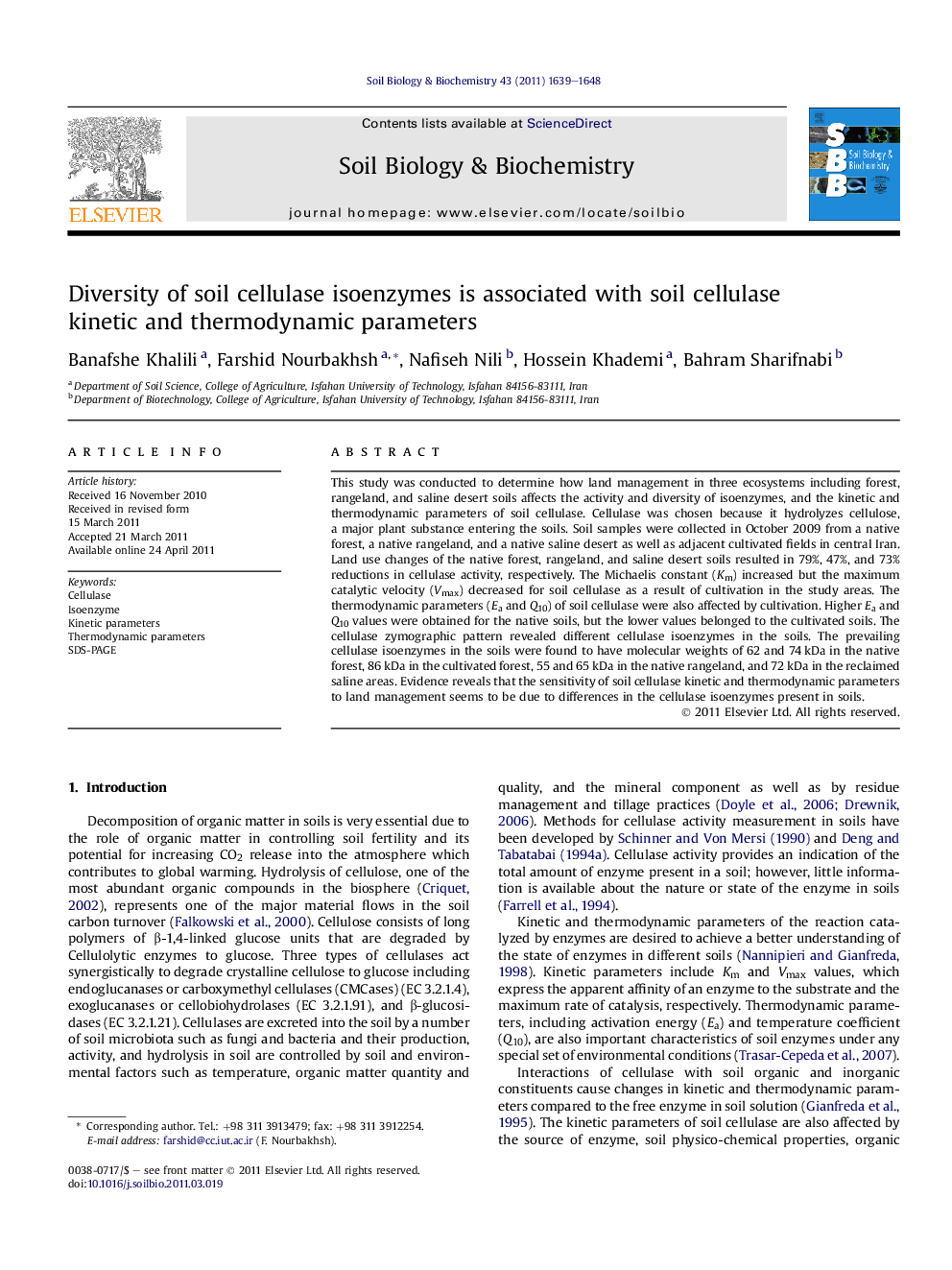| Article ID | Journal | Published Year | Pages | File Type |
|---|---|---|---|---|
| 2025102 | Soil Biology and Biochemistry | 2011 | 10 Pages |
This study was conducted to determine how land management in three ecosystems including forest, rangeland, and saline desert soils affects the activity and diversity of isoenzymes, and the kinetic and thermodynamic parameters of soil cellulase. Cellulase was chosen because it hydrolyzes cellulose, a major plant substance entering the soils. Soil samples were collected in October 2009 from a native forest, a native rangeland, and a native saline desert as well as adjacent cultivated fields in central Iran. Land use changes of the native forest, rangeland, and saline desert soils resulted in 79%, 47%, and 73% reductions in cellulase activity, respectively. The Michaelis constant (Km) increased but the maximum catalytic velocity (Vmax) decreased for soil cellulase as a result of cultivation in the study areas. The thermodynamic parameters (Ea and Q10) of soil cellulase were also affected by cultivation. Higher Ea and Q10 values were obtained for the native soils, but the lower values belonged to the cultivated soils. The cellulase zymographic pattern revealed different cellulase isoenzymes in the soils. The prevailing cellulase isoenzymes in the soils were found to have molecular weights of 62 and 74 kDa in the native forest, 86 kDa in the cultivated forest, 55 and 65 kDa in the native rangeland, and 72 kDa in the reclaimed saline areas. Evidence reveals that the sensitivity of soil cellulase kinetic and thermodynamic parameters to land management seems to be due to differences in the cellulase isoenzymes present in soils.
► Land use affect activity, kinetic and thermodynamic properties of soil cellulase. ► Different management systems bring about diverse cellulase isoenzymes. ► Diverse cellulase isoenzymes is associated with kinetic and thermodynamic parameters.
